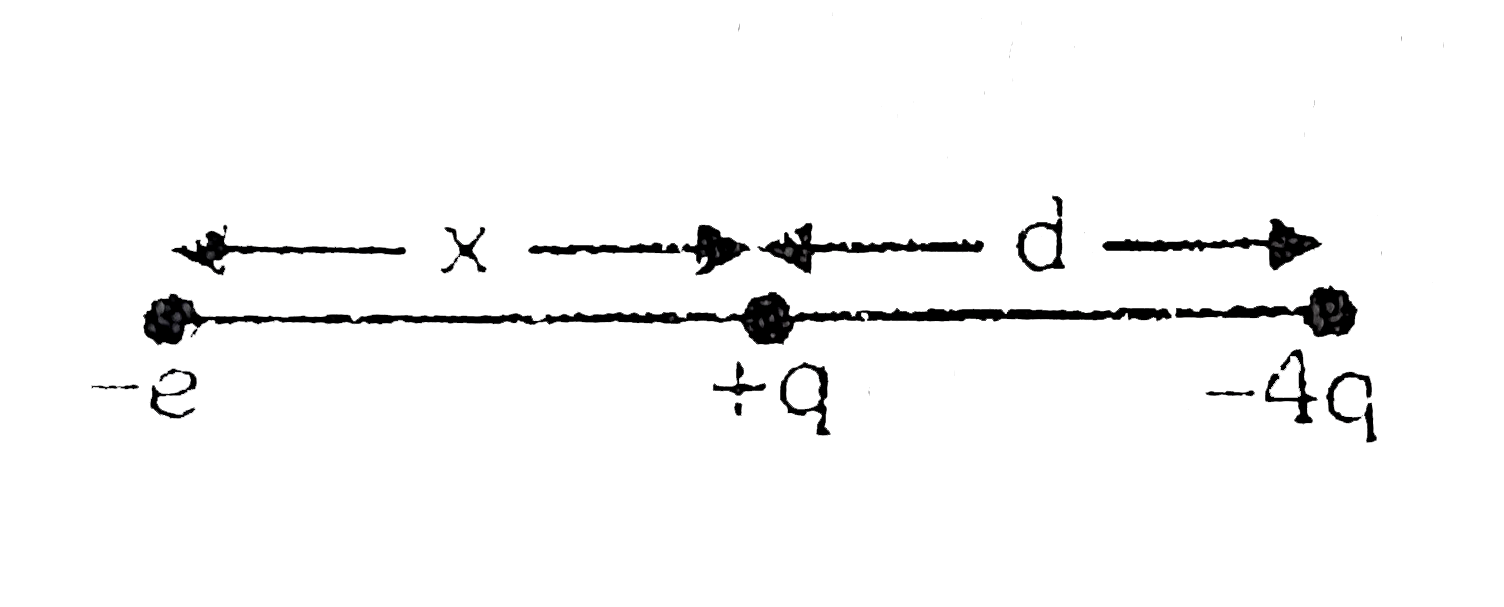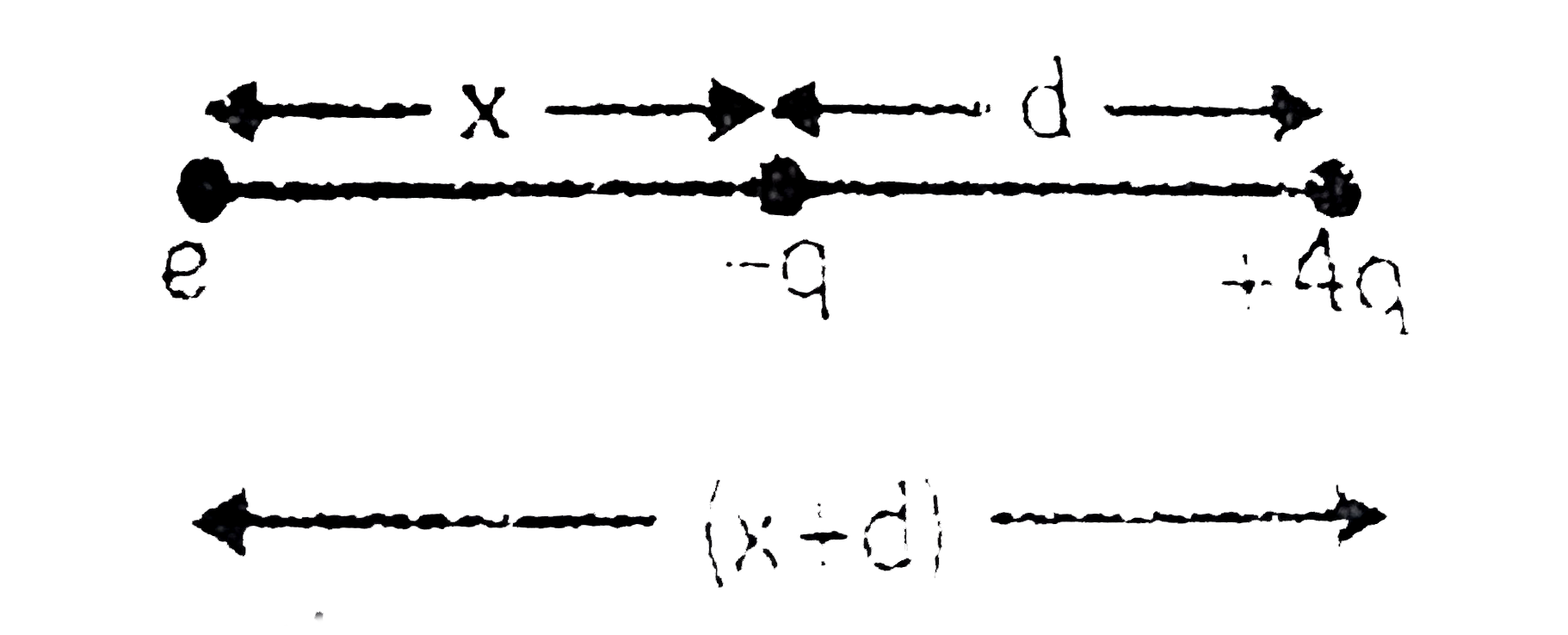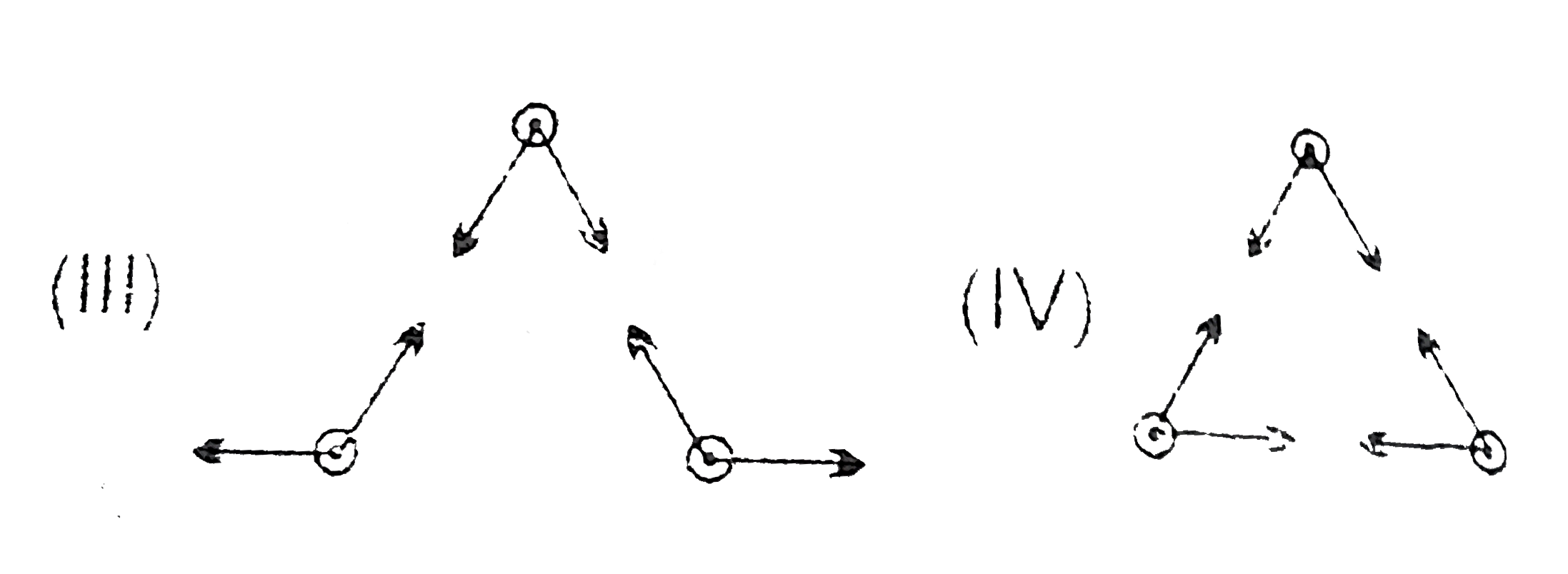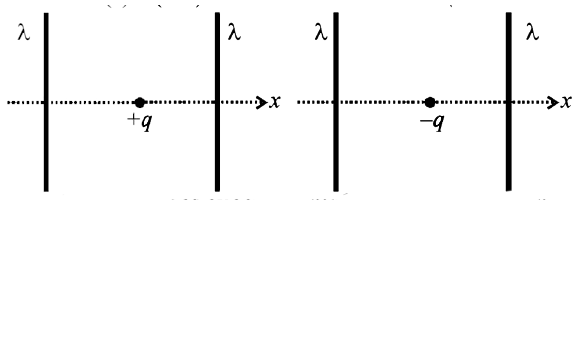The figure shown four situations in which charges as indicated (q>0) are fixed on an axis. How many situations is there a point to the left of the charges where an electron would be ib equilibrium?

The correct Answer is:2
For (1)
Let the electron be held at a distance x from +q charge.
For equilibrium q(−e)4π∈0x2+(−e)(−4q)4π∈0(x+d)2=0
We can find value of x for which Fnet=0 which means that electron will be in equilibrium.
For (2):
For equilibrium (−e)(−q)4π∈0x2+(−e)4q4π∈0(x+d)2=0
We can find value of x for which Fnet=0 which means that electron will be in equilibrium. In case (3) and (4) the electron will not remain at rest, since it experiences a net non-zero force.
OR
Equilibrium is always found near the smaller charge


Topper's Solved these Questions
- BOOK - ALLENCHAPTER - MISCELLANEOUSEXERCISE - Part -II Example Some worked out Examples1videos
MISCELLANEOUS
- BOOK - ALLENCHAPTER - MISCELLANEOUSEXERCISE - Exercise-0187videos
MISCELLANEOUS
- BOOK - ALLENCHAPTER - MISCELLANEOUSEXERCISE - Question1videos
MISCELLANEOUS
- BOOK - ALLENCHAPTER - KINEMATICS (MOTION ALONG A STRAIGHT LINE AND MOTION IN A PLANE)EXERCISE - BEGINNER S BOX-78videos
KINEMATICS (MOTION ALONG A STRAIGHT LINE AND MOTION IN A PLANE)
- BOOK - ALLENCHAPTER - PHYSICAL WORLD, UNITS AND DIMENSIONS & ERRORS IN MEASUREMENT EXERCISE - EXERCISE-IV8videos
PHYSICAL WORLD, UNITS AND DIMENSIONS & ERRORS IN MEASUREMENT
Similar Questions
Figure shows four situations in which an electron is moving in electric / magnetic field . In which case the de Broglie wavelength of electron is increasing ?
View SolutionFour equal charges are kept fixed on the vertices of a square of side 'a'. A charge q1 is kept at the centre of the square as shown in the figure . Then
 View Solution
View SolutionFollowing figures show four situations in which positive and negative charges move horizontaly through a region and give the rate at which each charge moves. Rank the situations according to the effective current through the region greatest first.
 View Solution
View SolutionTwo fixed charges +4q and +q are at a distance 3 m apart. At what point between the charge, a third charge +q must be placed to keep it in equilibrium ?
View SolutionA charge Q1=+1 C and Q2=−4 C are fixed at a separation of 1 m. Where should you place the third charge 'q', so that the entire system is in equilibrium ?
View SolutionA figure below shows the forces that three charged particles exert on each other. Which of the four situations shown can be correct .

 View Solution
View SolutionFigure shows two charge particles on an axis. The charges are free to move. At one point, however, a third charged particle can be placed such that all three particles are in equilibrium.
(a) Is that point to the left of the first two particles to their rightm or between them?
(b) should the third paricle be positively or negatively charged?
(c ) Is the equilibrium stable or unstable?
 View Solution
View SolutionTwo fixed point charges +4e and +e units are separated by a distance a. Where should a third point charge be placed for it to be in equilibrium?
View SolutionThe figure below depict two situations in which two infinitely long static line charges of constant positive line charge density λ are kept parallel to each other. In their resulting electric field, point charges q and −q are kept in equilibrium between them. The point charges are confined to move in the x direction only. If they are given a small displacement about their equilibrium positions, then the correct statement(s) is(are)
 View Solution
View SolutionTwo point charge −q and +q/2 are situated at the origin and the point (a,0,0) respectively. The point along the X-axis where the electic field Vanishes is
View Solution

